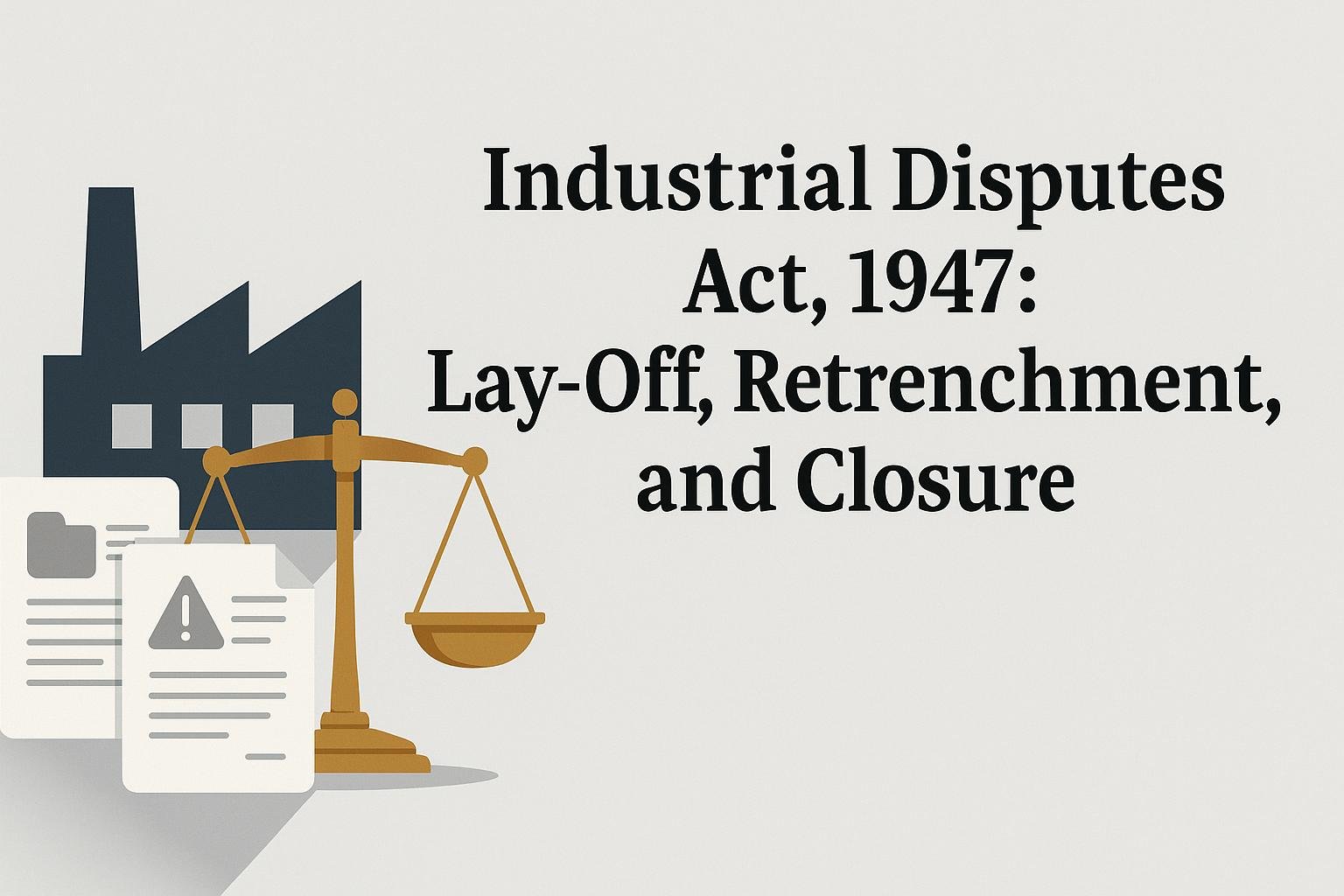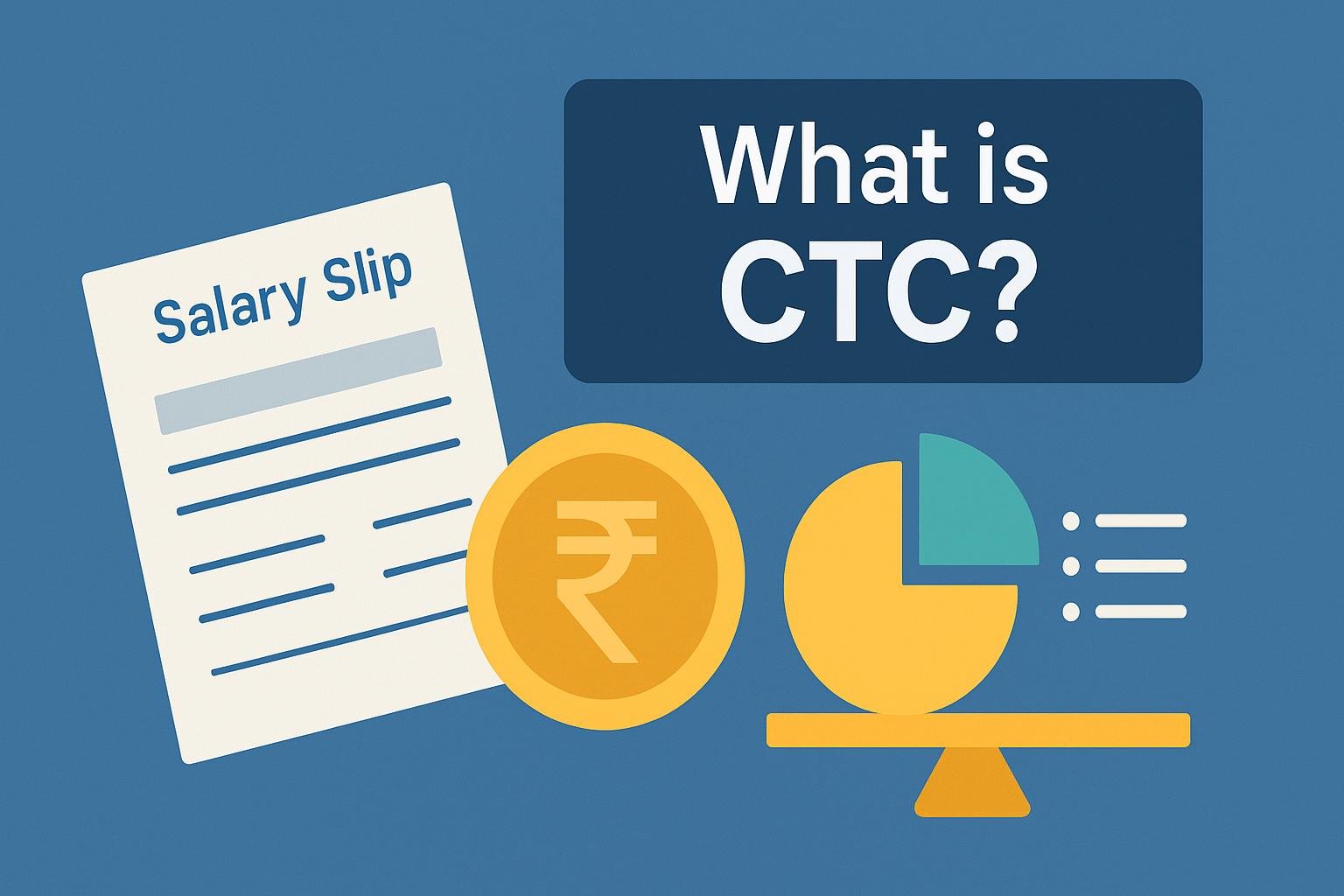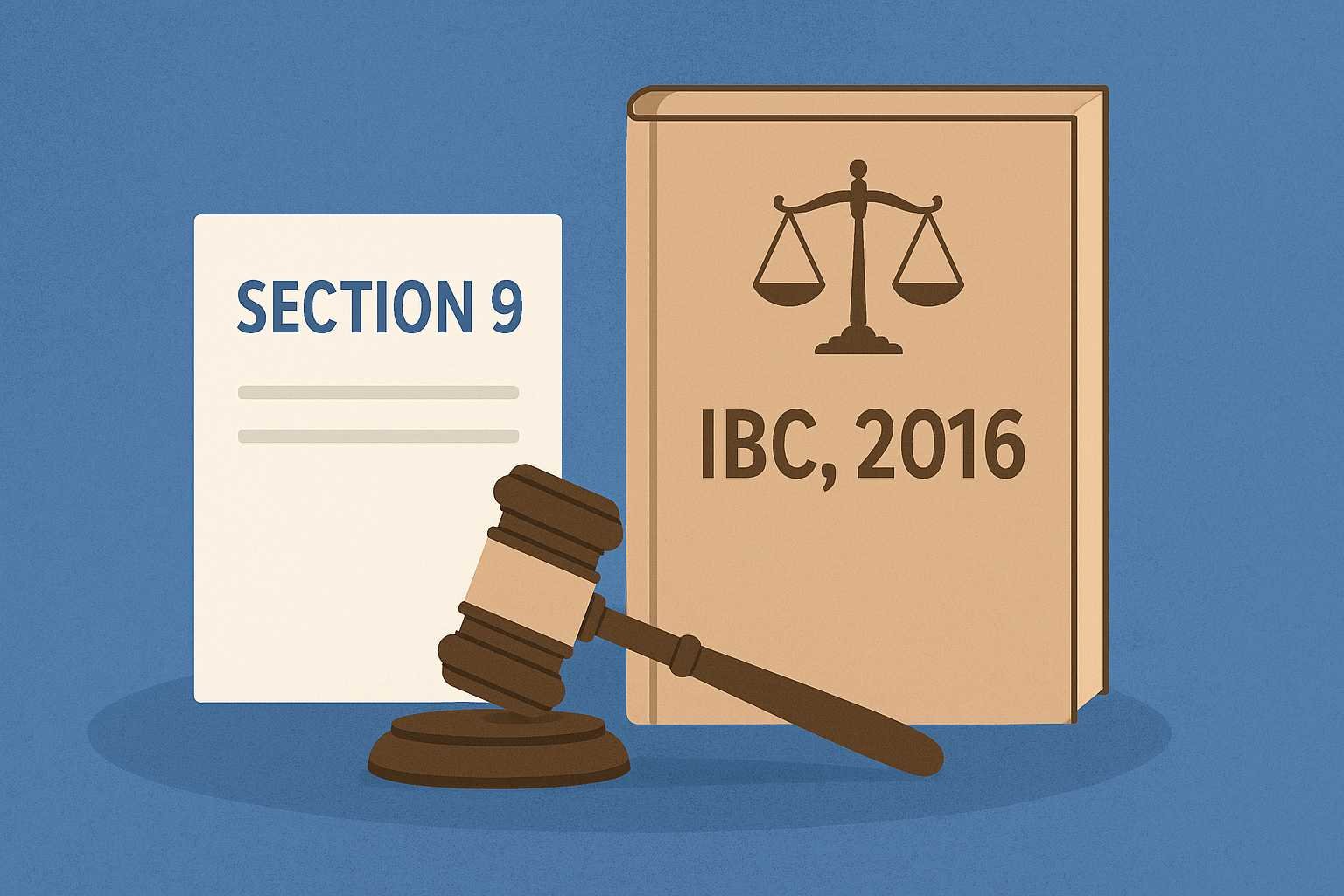On this page you will read detailed information about Industrial Disputes Act (1947).
Introduction
The Industrial Disputes Act, 1947 (IDA) is a landmark labour law in India aimed at promoting industrial peace by providing mechanisms for investigation and settlement of disputes between employers and workmen. While much of the Act deals with disputes, strikes, and adjudication, some of its most critical and frequently discussed sections relate to three major employer actions: lay-off, retrenchment, and closure. These provisions protect workmen’s rights when employment is disrupted due to economic, structural or operational reasons.
With rapid changes in business models, labour regulation reform dialogues, and evolving jurisprudence, employers and employees alike must understand how lay-off, retrenchment and closure are defined, what procedures apply, and what rights flow from them.
What the Act Covers: Chapter V-A & V-B
The Act defines key terms in Section 2:
- Lay-off under Section 2(kkk)
- Retrenchment under Section 2(oo)
- Closure under Section 2(cc)
Chapter V-A and the special provisions of Chapter V-B (Sections 25K to 25S) apply to large industrial establishments (those with an average of 100 or more workmen on any working day for the preceding twelve months) and regulate lay-off, retrenchment and closure of such establishments.
Lay-Off: Temporary Loss of Employment
What is a Lay-Off?
Lay-off occurs when an employer fails, refuses or is unable to give employment to a workman whose name is on the muster roll of the industrial establishment. Typical causes include shortage of coal, power failure, raw material shortage, accumulation of stock or machinery breakdown.
Key conditions:
- The workman must be on the muster roll (i.e., engaged for hire/reward and not a casual/badli worker).
- The establishment must ordinarily provide employment; a temporary “lay-off” means employment is stopped temporarily, not permanently terminated.
- For large establishments (100+ workmen), prior government permission under Section 25M is required in certain cases.
Employer Obligations & Workman Rights
Under Section 25C, a workman laid off is entitled to compensation equal to 50 % of basic wages plus dearness allowance for the period of lay-off.
Section 25D imposes on the employer the duty to maintain muster-rolls and records of employment. Section 25E lists circumstances where a workman is not entitled to compensation, e.g., if the workman refuses alternate suitable work within a specified radius.
Example:
An employee regularly employed in a large unit is asked not to report for 3 months because of a machinery breakdown. The employer applies for permission under Section 25M; meanwhile, the employee may receive lay-off compensation pending approval.
Retrenchment: Permanent Termination of Service
What is Retrenchment?
Retrenchment means the termination of service of a workman by the employer for reasons other than disciplinary action, voluntary retirement, superannuation or renewal/expiry of contract.
Conditions Precedent (Section 25F)
Before retrenching a workman, the employer must:
- Provide at least one month’s notice or wages in lieu thereof.
- Pay retrenchment compensation: 15 days’ average pay for every completed year of service, or part thereof exceeding six months.
- Apply Section 25-G “last in, first out” principle when retrenching workmen of the same category (subject to collective agreement or standing orders).
- For large establishments (100+ workmen), obtain prior government permission under Section 25N.
Exceptions
Retrenchment provisions don’t apply if termination is due to misconduct or voluntary retirement.
Recent Developments
Press Releases from the Ministry of Labour affirm that any retrenchment or lay-off in violation of IDA provisions is deemed illegal.
Closure: Permanent Cessation of an Undertaking
Definition and Scope
“Closure” means the permanent closing down of a place of employment or part thereof.
Procedure (Section 25FFA)
For large establishments, the employer must give 60 days’ notice in writing to the appropriate government before closing down the undertaking or part thereof, in which 100 or more workmen were employed.
Liability on Closure
- The employer must pay retrenchment compensation to workmen even when closure is the reason for termination.
- The government has power to direct reopening of a closed undertaking if it is in public interest.
Key Comparisons — Lay-Off vs Retrenchment vs Closure
| Feature | Lay-Off | Retrenchment | Closure |
|---|---|---|---|
| Nature | Temporary stoppage | Permanent termination of individual workmen | Permanent shutdown of entire unit/part |
| Trigger | Shortage of resources, stock accumulation, machinery breakdown | Employer’s action due to surplus labour, business restructuring | Decision to wind up business operations |
| Right to compensation | Yes (50% basic wages + DA) | Yes (15 days average pay per year of service) | Yes (through retrenchment/closing dues) |
| Permission required (100+ workmen) | Prior permission required except in exigencies | Prior government permission required | Notice of 60 days or approval required |
Applicability and Thresholds
The special provisions of Chapter V-B apply only to industrial establishments with at least 100 workmen on average per working day in the preceding 12 months (for non-seasonal industries) under Section 25K.
Smaller units may still be subject to general IDA provisions, though some of the more stringent procedural safeguards (permission, compensation) may not be applicable.
In the previous post, we had shared information about What Is CTC? Complete Meaning, Components, and Calculation Explained, so read that post also.
Practical Implications for Workmen and Employers
For Workmen:
- If you’re laid off, retrenched or impacted by closure, check whether your employer followed notice/permission/compensation rules.
- If employer failed to comply, you may approach the Labour Court or appropriate industrial tribunal and claim compensation for non-compliance.
- Retrenchment compensation is a statutory right if conditions are met (continuous service, one year etc.).
For Employers:
- Before implementing lay-off, retrenchment or closure, assess whether your establishment falls under Chapter V-B.
- Maintain accurate muster-rolls, employment records, and justification of economic factors (e.g., surplus, redundancy).
- Seek government approval where required, pay necessary compensation, and engage in consultation with workmen/unions.
- Failure to comply may lead to liability for compensation, reopening of unit by government, or directed reinstatement.
Recent Challenges & Developments
- Although the Industrial Relations Code, 2020 has been proposed to consolidate labour laws (including IDA), as of 2025 the IDA remains in force in many respects.
- Courts continue to emphasise that mere label of “retrenchment” does not absolve procedural requirements — substance over form matters.
- Increased litigation around small establishments claiming applicability of Chapter V-B because non-compliance is costly.
- Shift from manufacturing to service sector means many workplaces are scrutinised for compliance even if not traditionally “industrial”.
Conclusion
The Industrial Disputes Act, 1947 remains a foundational statute governing how employers may lawfully carry out lay-off, retrenchment and closure in India. While these actions may be necessary in business, they are not free from regulation. Employers must follow prescribed procedures, obtain permissions (where applicable), pay compensation and keep transparent records. Workmen, for their part, must be aware of the statutory protections attached to each scenario and enforce their rights when the law is flouted.
Whether you are a workman facing job loss or an employer considering restructuring, understanding the differences between lay-off (temporary interruption), retrenchment (permanent termination) and closure (shutting down) is vital. Proper compliance ensures fairness, legal certainty and industrial harmony — key aims of the Act.
Disclaimer
The information and services on this website are not intended to and shall not be used as legal advice. You should consult a Legal Professional for any legal or solicited advice. While we have good faith and our own independent research to every information listed on the website and do our best to ensure that the data provided is accurate. However, we do not guarantee the information provided is accurate and make no representation or warranty of any kind, express or implied, regarding the accuracy, adequacy, validity, reliability, availability, or completeness of any information on the Site. UNDER NO CIRCUMSTANCES SHALL WE HAVE ANY LIABILITY TO YOU FOR ANY LOSS OR DAMAGE OF ANY KIND INCURRED AS A RESULT OR RELIANCE ON ANY INFORMATION PROVIDED ON THE SITE. YOUR USE OF THE SITE AND YOUR RELIANCE ON ANY INFORMATION ON THE SITE IS SOLELY AT YOUR OWN RISK. Comments on this website are the sole responsibility of their writers so the accuracy, completeness, veracity, honesty, factuality and politeness of comments are not guaranteed.
So friends, today we talked about Industrial Disputes Act (1947), hope you liked our post.
If you liked the information about Industrial Disputes Act (1947), then definitely share this article with your friends.
Knowing about laws can make you feel super smart ! If you find value in the content you may consider joining our not for profit Legal Community ! You can ask unlimited questions on WhatsApp and get answers. You can DM or send your name & number to 8208309918 on WhatsApp









